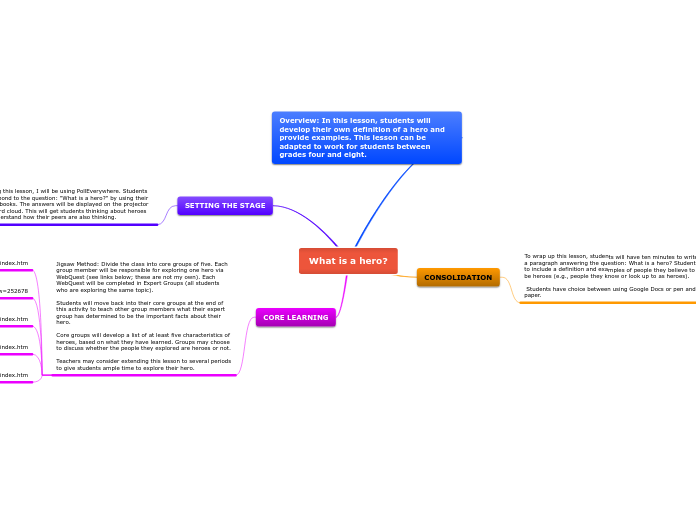What is a hero?
Overview: In this lesson, students will develop their own definition of a hero and provide examples. This lesson can be adapted to work for students between grades four and eight.
SETTING THE STAGE
To being this lesson, I will be using PollEverywhere. Students can respond to the question: "What is a hero?" by using their Chromebooks. The answers will be displayed on the projector as a word cloud. This will get students thinking about heroes and understand how their peers are also thinking.
CORE LEARNING
Jigsaw Method: Divide the class into core groups of five. Each group member will be responsible for exploring one hero via WebQuest (see links below; these are not my own). Each WebQuest will be completed in Expert Groups (all students who are exploring the same topic).
Students will move back into their core groups at the end of this activity to teach other group members what their expert group has determined to be the important facts about their hero.
Core groups will develop a list of at least five characteristics of heroes, based on what they have learned. Groups may choose to discuss whether the people they explored are heroes or not.
Teachers may consider extending this lesson to several periods to give students ample time to explore their hero.
Malala Yousafzi:
http://questgarden.com/166/83/7/140202104415/index.htm
Nelson Mandela:
http://zunal.com/webquest.php?w=252678
Harriet Tubman:
http://questgarden.com/173/06/3/140719083127/index.htm
CONSOLIDATION
To wrap up this lesson, students will have ten minutes to write a paragraph answering the question: What is a hero? Students to include a definition and examples of people they believe to be heroes (e.g., people they know or look up to as heroes).
Students have choice between using Google Docs or pen and paper.
